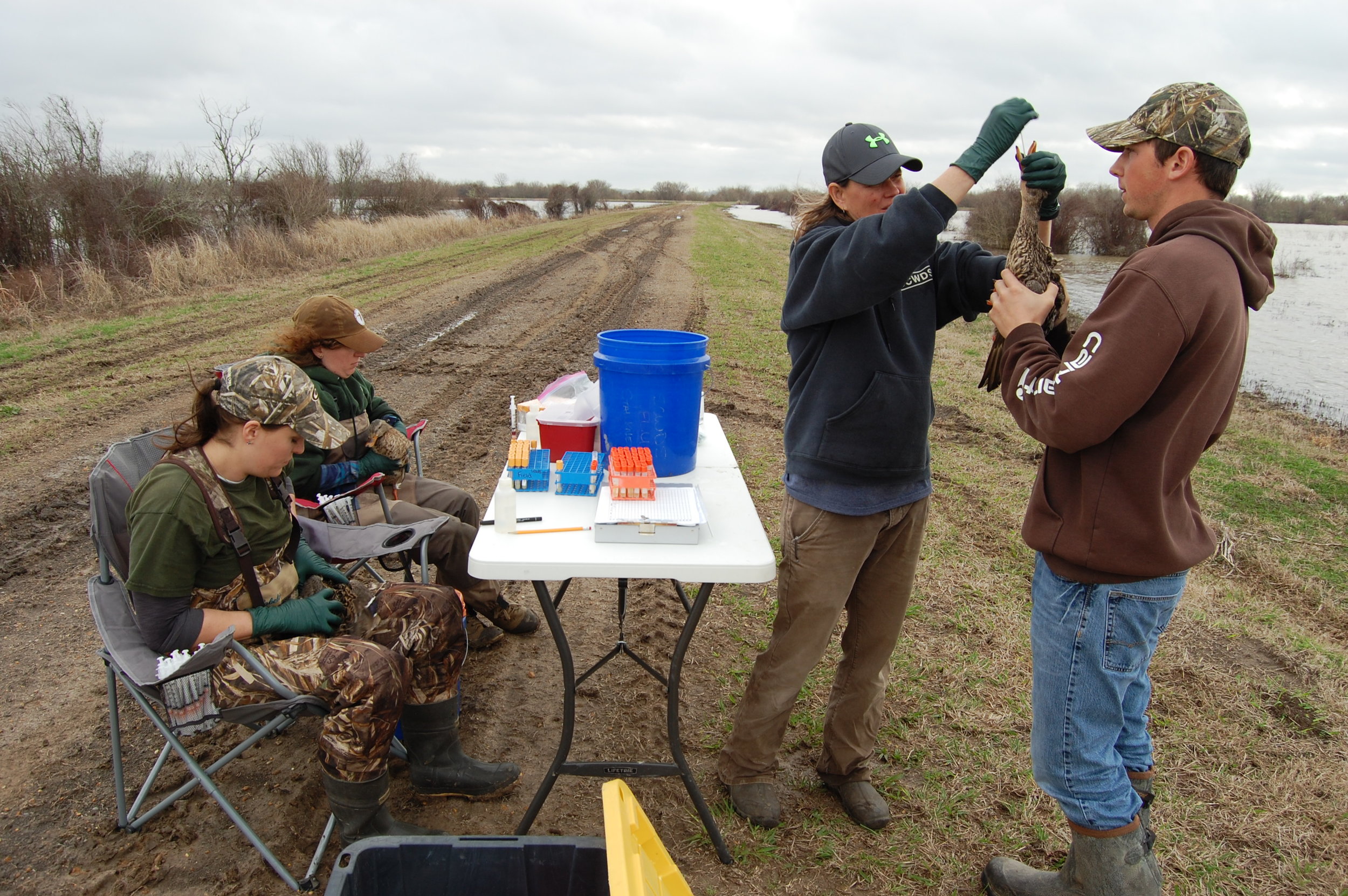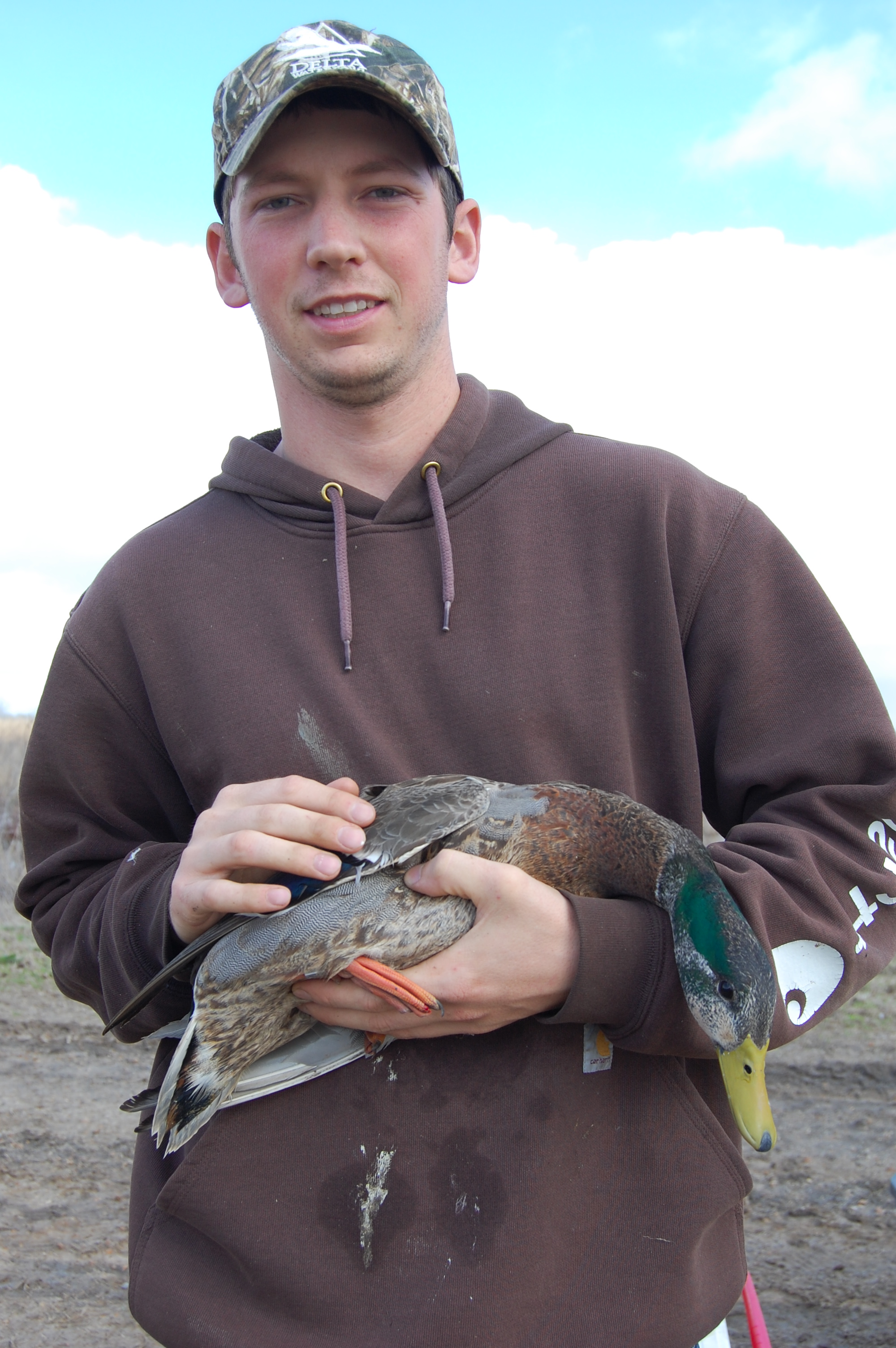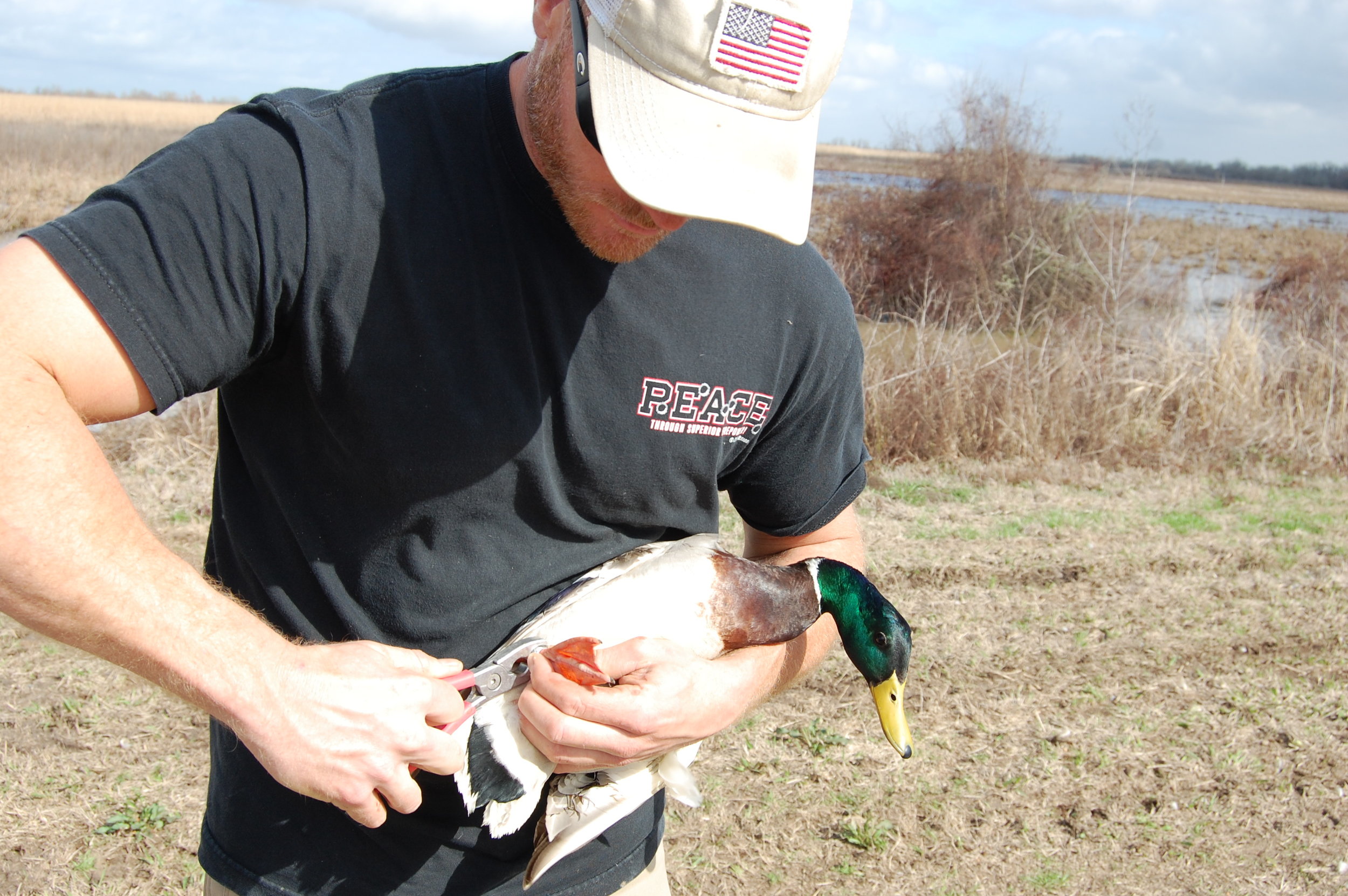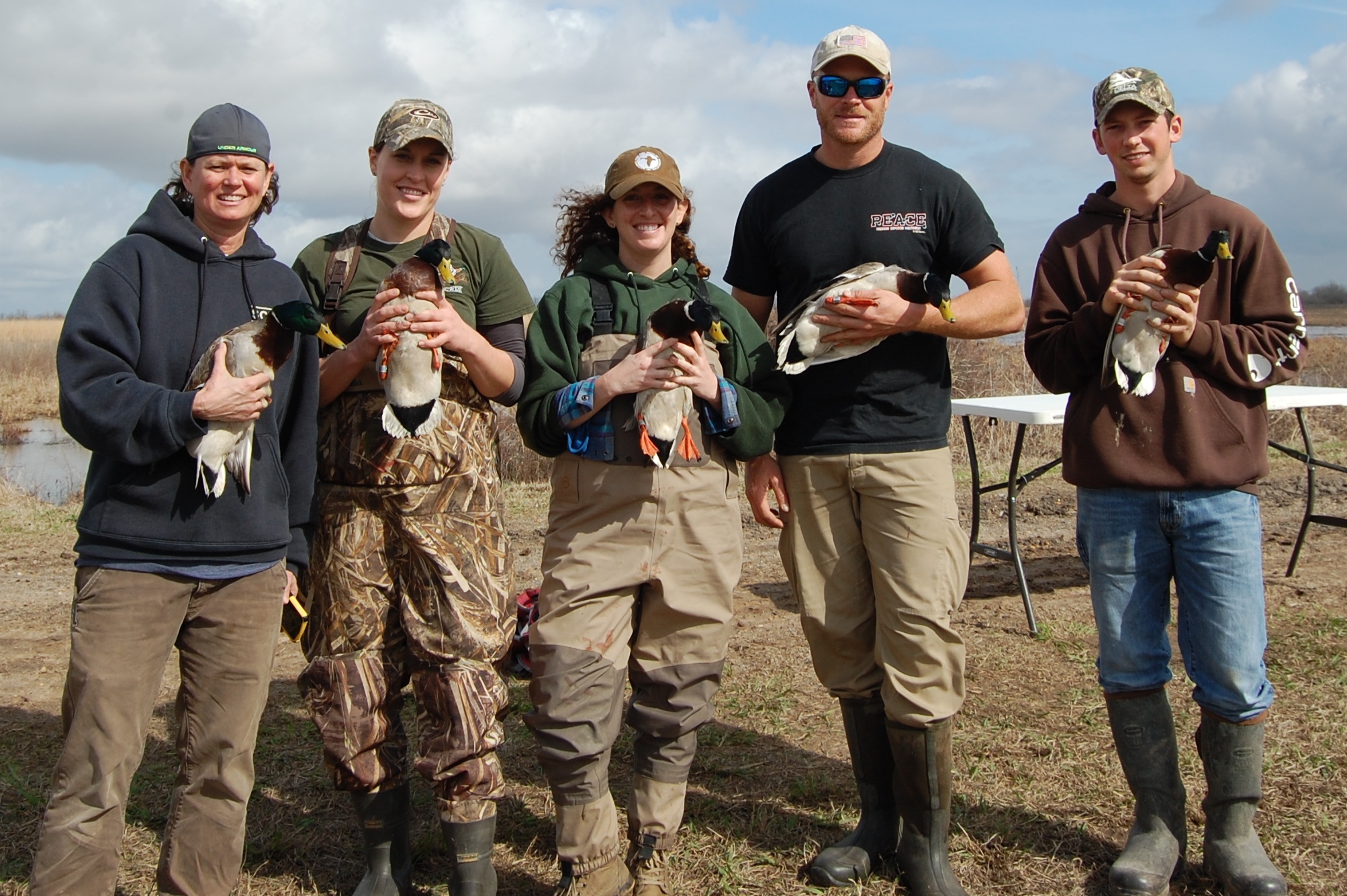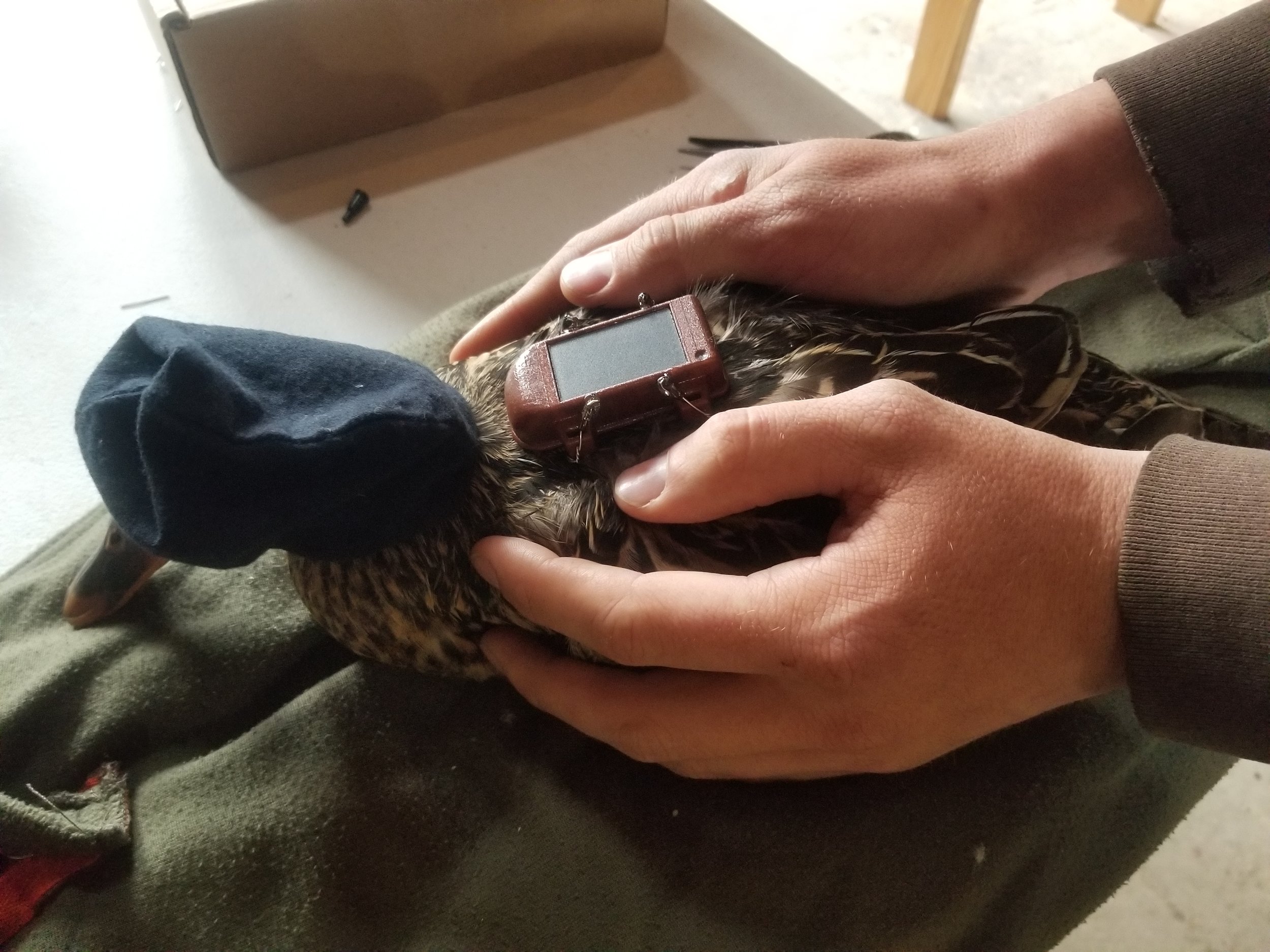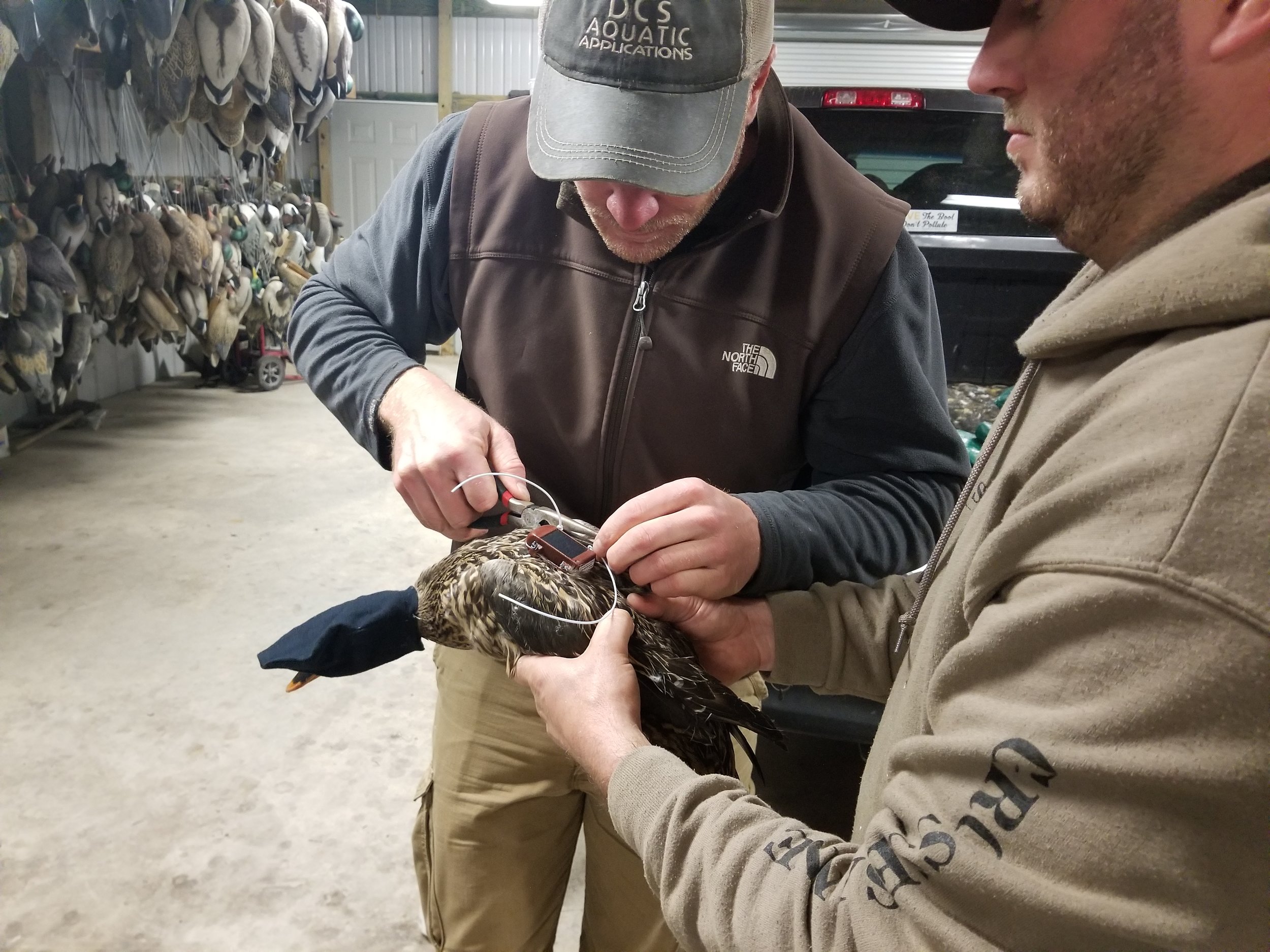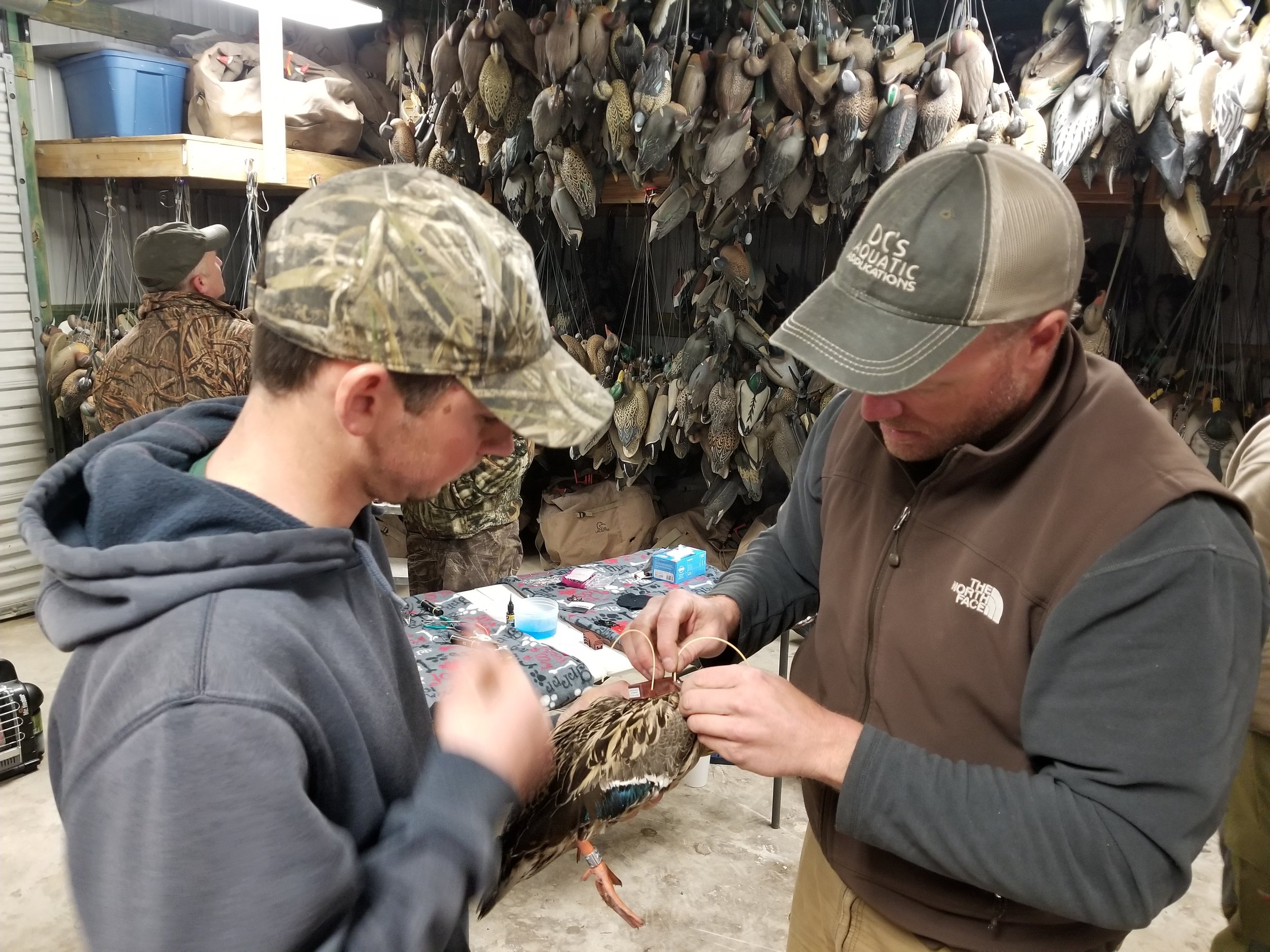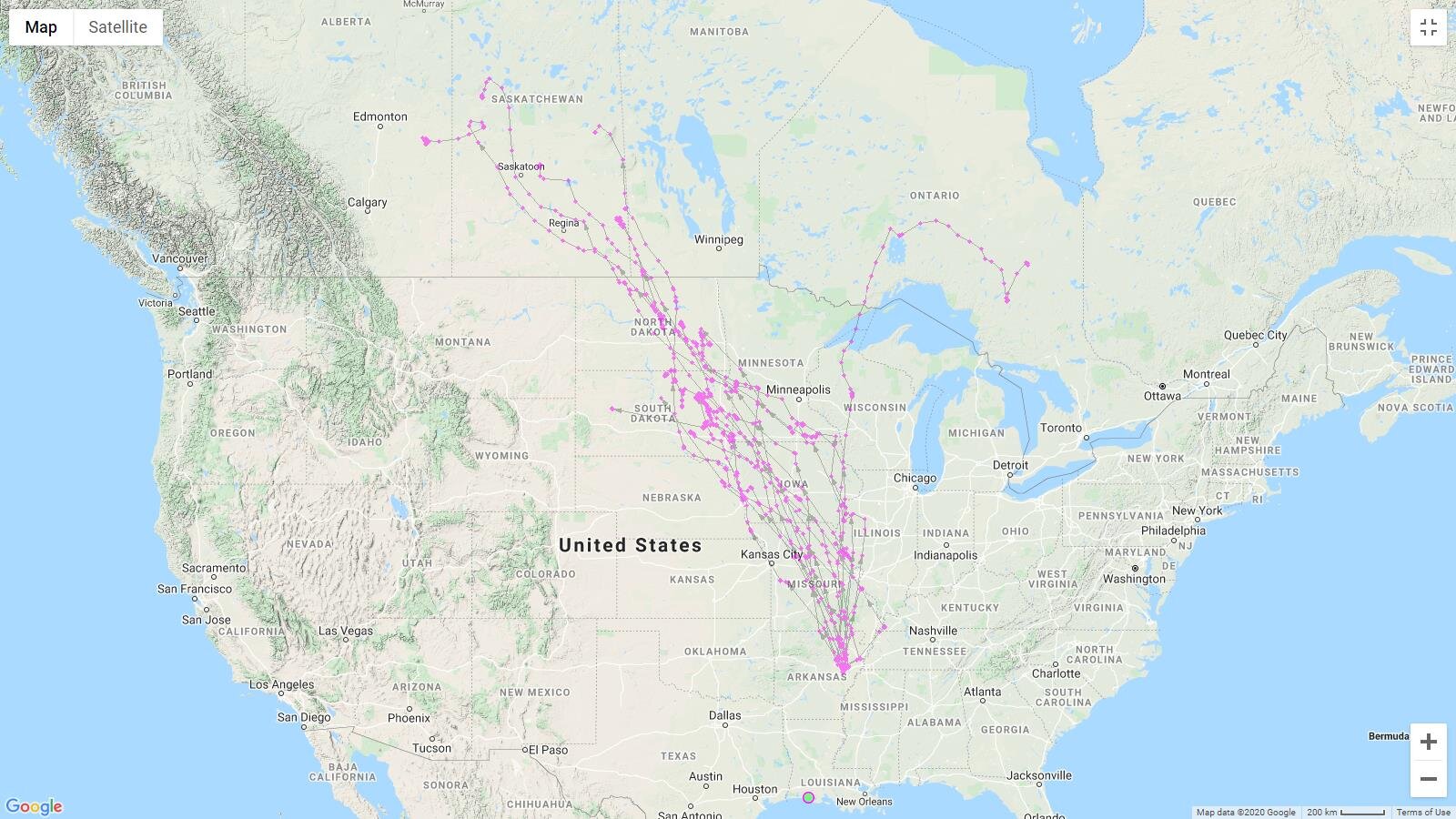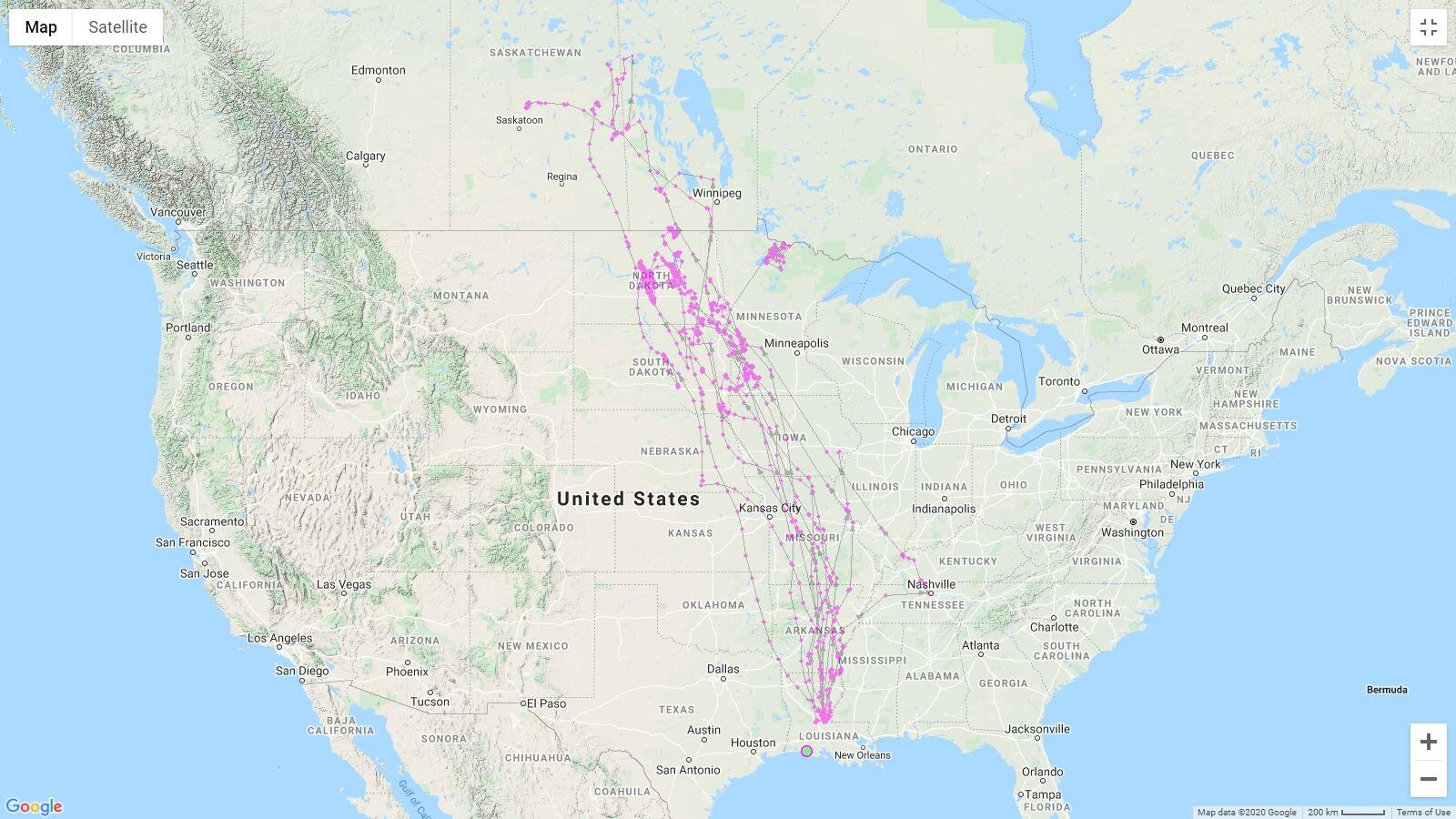MALLARD telemetry
Identifying migration routes, timing of migrations, and important breeding, staging, and wintering areas for mallards.
THE NEED
Mallards are the most common and highest harvested duck in the Mississippi Flyway. Banding data from breeding grounds and harvest of birds on wintering areas are often used to imply where birds are produced; however, where a hatch year bird was captured and banded does not assure it hatched near that banding location (i.e., molt migrations). Mallards are highly adaptable and may be an indicator of habitat quantity and quality, and thus may be representative of other resident and wintering species using similar habitats. Habitat use of mallards in Louisiana has received limited study, and the timing and duration of mallard spring migration routes and identification of critical breeding areas from this region is needed to prioritize investment in important waterfowl breeding habitats (i.e., Louisiana Revised Statute 56: 104[A][1] [b]).
STUDY AREA
We will radiomark MALL at wintering areas in Southwest Louisiana, and pending funding, in central and/or northeast Louisiana. Birds will be tracked across North America.
THE OBJECTIVE
- Identify the best transmitter attachment method for minimal transmitter effects and rapid field deployment, with implications for future research on other species of interest.
- Identify critical stopover and breeding areas for mallards originating from Louisiana.
- Quantify migration of female mallards originating from Louisiana (migration speed, use of stopovers, timing arrival/departure to and from breeding/wintering areas, etc.).
- Investigate differences in individual strategies related to their reproductive success (where possible).
- Investigate winter habitat use, fidelity, and survival.
- Collaborative benefits to ongoing waterfowl disease surveillance with UGA/SCWDS.
THE METHODS
MALL will be captured with rocket nets with or without bait. Where possible we will begin trapping prior to the close of duck hunting season. This effort will allow additional time for birds to acclimate to their transmitters prior to onset of migration, enable additional late winter habitat use and movement data collection, and hedge against an early spring exodus. We will deploy a minimum of 20 transmitters per year for a minimum of 2 years. Pending funding, we will also deploy 20 transmitters per year in central or northeast LA to compare and contrast use of habitats and wintering fidelity among birds captured in LA.
PHOTO GALLERY
